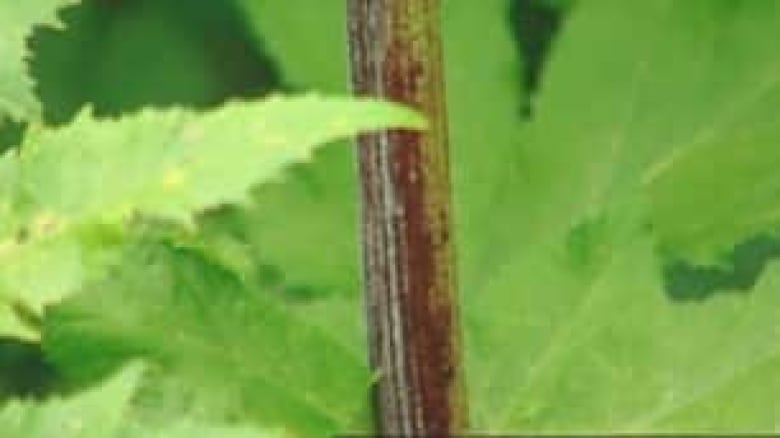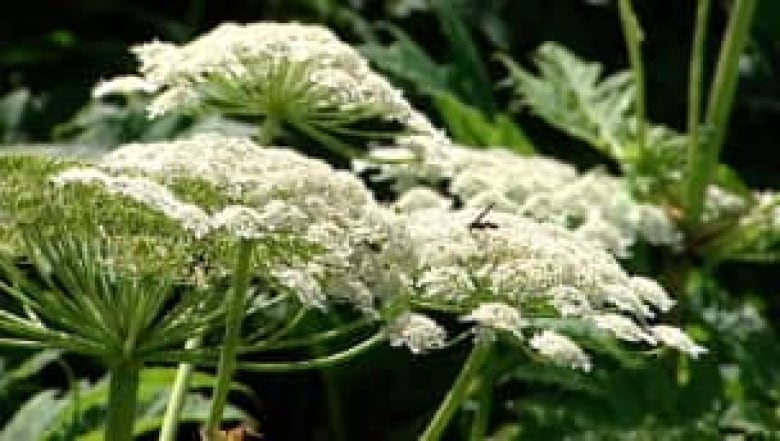Giant hogweed invades Richmond

Lesley Douglas, the city's manager of environmental sustainability, said the plant has been found on Sea Island, growing between the fire hall and Flight Path Park.
Sap from Heracleum mantegazzianum, or giant hogweed, can cause rashes and blisters on the skin when exposed to sunlight. If the plant's sap gets into a person's eyes, it can cause temporary or permanent blindness.
Giant hogweed is a relatively new plant to Richmond, but officials say a few sightings have recently been made on city property.
Douglas said the city is sending a crew to remove the plants on the Sea Island.
"There's a number of different approaches and what we're trying to do is go with the most effective approach that puts our own workers and the public at the least amount of risk," she said.

Douglas warned that members of the public not to attempt to remove the plant themselves.
She said anyone who comes across giant hogweed should contact the Invasive Plant Council of B.C.
The plant can be identified by its sheer size it can grow up to six metres high, with serrated leaves as large as 1.5 metres across, as well as dark reddish-purple blotches on its stalks.
It produces white clusters of umbrella-like flowers and thrives near streams, creeks, ditches, roads and in vacant lots.
Giant hogweed can easily be confused with other native plants such as cow parsnip or Queen Anne's lace, which also have umbrella-like flowers, but are smaller and do not pose similar health risks.












_(720p).jpg)


 OFFICIAL HD MUSIC VIDEO.jpg)
.jpg)



























































































